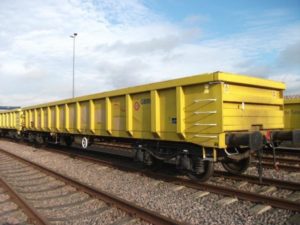
British-based Ferrexpo plc, which in Ukraine controls, in particular, Poltava and Yeristovo mining and processing plants (PGOK and YeGOK), continues to increase its fleet of wagons, having received 50 new high-sided cars from Kriukov Car Building Works (KCBW, Poltava region) from the ordered 400.
“Good news … We’ve received the first 50 new wagons from KCBW out of 400 ordered. Thus, there will be 3,050 high-sided wagons operating in Ferrotrans subsidiary. The planned increase in the fleet of our own wagons is necessary to implement Ferrexpo’s strategic plan to double the production of pellets within five years,” Vitaliy Oliynyk, the logistics manager at Ferrotrans, part of Ferrexpo Group, said on Facebook.
However, he noted that now an increase in the fleet of wagons will not lead to an increase in the shipment of products, “since the monopoly carrier does not have the technical ability to deliver goods to their destination.”
“Without attracting private capital to purchase locomotives and using them on trunk routes, we can’t even dream of increasing exports … We expect decisive actions from the new government, and we’ll get to work together,” the manager stated.
He regretted the loss of control over Stakhanov Car Building Plant, which was part of Finance and Credit financial and industrial group controlled by Ukrainian businessman Kostiantyn Zhevaho.
“If it wasn’t for war, then Ferrexpo would have been provided with absolutely any quantity of quality high-sided cars and dump cars produced by PJSC Stakhanov Car Building Plant,” Serhiy Zelensky, the plant’s ex-manager for sales and marketing, noted.
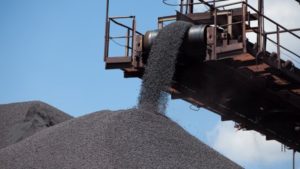
Ferrexpo mining company with assets in Ukraine in H1 2019 reported $270.35 million in net profit, which is 77.6% higher than the same period in 2018.
According to the financial statements posted by the company on the website of the London Stock Exchange (LSE), higher iron ore fines prices and an increase in sales volumes account for the increase.
Ferrexpo’s revenue was 28% up and amounted $787 million, while EBIDTA increased 59% to $372 million.
“During the period we continued to benefit from strong pricing for our high-grade iron ore pellets, which helped deliver healthy cash flows. This enabled us to allocate capital to further reduce debt, increase organic investment in our assets to drive medium term growth and declare a record interim dividend to shareholders,” Ferrexpo Non-Executive Chairman Steve Lucas said.
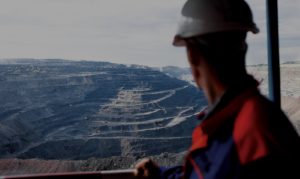
British-based Ferrexpo plc in January-March 2019 invested UAH 1.3 billion (over $47.5 million) in the development of Poltava, Yeristovo and Belanovo mining and processing plants (GOK) it controls, which is 73.6% more than the investments for the same period in 2018 in the hryvnia (over UAH 748.9 million) and 71% in U.S. dollars (over $27.8 million).
According to the investment program approved by the board of directors, Ferrexpo Group for January-March 2019 invested more than UAH 855 million, or more than $31.4 million, in Poltava GOK (Ferrexpo Poltava Mining), over UAH 438.3 million, or more than $16.1 million in the development of Yeristovo and Belanovo GOKs (Ferrexpo Yeristovo Mining, Ferrexpo Belanovo Mining).
The main capital investments of PGOK were the costs of supporting existing production in the amount of over UAH 209 million, or more than $5 million and large strategic projects worth over UAH 272 million, or more than $16.3 million, components worth over UAH 373 million, or more than $10 million.
The funds of YeGOK and BGOK were invested in processing, the development of railway tracks and objects, in projects for capital construction of infrastructure, quarrying, geological and other work.

Ferrexpo with assets in Ukraine in 2018 saw $335.22 million in net profit, which is 15% lower than the figure of 2017.
According to the annual financial statements posted by the company on the website of the London Stock Exchange (LSE) on Tuesday, its revenue last year grew by 6.4%, to $1.274 billion with a fall of 2.3% in sales of pellets, to 10.227 million tonnes and growth of pellet production by 1.6%, to 10.607 million tonnes.
Gross profit fell by 2.5%, to $766.09 million, earnings before interest, taxes, depreciation and amortization (EBITDA) – by 8.7%, to $502.88 million and operating profit – by 12.7%, to $427.58 million.
Net debt fell by 14%, to $339 million with capital investment growing by 31.1%, to $135 million.
“We continued to benefit from the strong global demand for our high-grade iron ore pellets, which helped deliver strong cash flow despite a rise in costs. This enabled us to increase investment, reduce debt further and pay a record dividend,” Non-executive Chairman Steve Lucas said.
He said that “our balance sheet is now strong and this gives us a platform to deliver the next stage in our planned expansion.” “This year we plan to increase investment once more to be able to hit our medium-term production target of 12 million tonnes per annum by 2021 and lay the foundations for our longer-term intention to move to annual output of 20 million tonnes per annum,” he said.
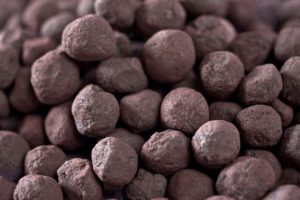
Ferrexpo Plc (the U.K.), which in Ukraine controls Poltava and Yeristovo mining enterprises, in 2018 exported 10.287 million tonnes of pellets to European countries, as well as to Japan, Taiwan, South Korea and China, remaining the leader in exports of pellets among similar companies from the CIS. The company said in a press release on Wednesday that the information was published by state-owned enterprise Ukrainian Industry Expertise.
Poltava Mining exported 7.61 million tonnes of iron ore pellets and Yeristovo Mining – 2.677 million tonnes.
According to the document, the Metinvest group exported 5.374 million tonnes of pellets (including Pivnichny Mining – 3.136 million tonnes, Central Mining – 2.239 million tonnes).
The Severstal Group, in particular, the Karelsky Okatysh (Russia) exported 5.293 million tonnes of iron ore pellets for the reporting period. The Metalloinvest group exported 4.205 million tonnes of pellets (including Mikhailovsky GOK – 2.817 million tonnes, Lebedinsky GOK – 1.389 million tonnes, all of them based in Russia). The Evraz group, in particular EVRAZ KGOK, exported 558,900 tonnes of pellets.
“Ferrexpo has traditionally become the leader in the export of iron ore pellets among the enterprises of the former USSR countries, according to the results of 12 months of 2018,” the company said in the press release referring to the data of Ukrainian Industry Expertise.
In addition, it is reported that during this period, Poltava Mining produced 10.607 million tonnes of iron ore pellets. The production of Mikhailovsky GOK totaled 14.887 million tonnes of iron ore pellets, Karelsky Okatysh – 11.225 million tonnes, and Pivnichny Mining – 8.45 million tonnes.
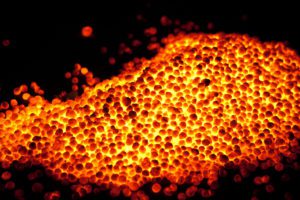
Ferrexpo Plc (the U.K.), controlling Poltava and Yeristovo mining combines, in 2018 increased total pellet production by 1.6% compared with 2017, to 10.607 million tonnes.
According to a press release of the company issued on Tuesday, over the period production of 65% Fe pellets (Ferrexpo Premium Pellets, FPP and Ferrexpo Premium Pellets plus, FPP+) totaled 9.95 million tonnes (a rise of 0.4%) and 62% Fe pellets (Ferrexpo Basic Pellets, FBP) – 682,490 tonnes (a rise of 22.2%).
Production of 65% Fe pellets from own ore was 9.824 million tonnes (a fall of 0.1%) and 62% Fe pellets – 682,490 tonnes (a rise by 22.2%).
In Q4 2018, total pellet production grew by 7.2% compared with Q3 2018, to 2.851 million tonnes.
“Total 2019 pellet production is expected to be in line with 2018 at 10.6 million tonnes as a result of ongoing maintenance,” the company said.
2018 sales volumes will be approximately 10.2 million tonnes (2017 sales volumes: 10.5 million tonnes). Sales volumes were impacted by reduced barge shipments given the low water levels on the Danube River in H2 2018. Slower than expected rail shipments in December 2018 and the timing of a capesize shipment falling into January 2019 also impacted sales volumes. The group expects these sales volumes to be caught up in H1 2019.
The group’s average received price was approximately 9% higher in 2018 compared to 2017, reflecting stronger premiums for higher quality iron ore, including higher average pellet premiums, offset by a slightly lower average 62% Fe iron ore fines price and higher international freight rates.
“The full year average 2018 cash cost of production is expected to be approximately $44 per tonne compared to $33 per tonne in 2017 due to higher energy prices and increased mining costs. Net debt as of December 31, 2018 was approximately $340 million (December 31, 2017: $403 million). The group’s cash balance as of December 31, 2018 was approximately $60 million while undrawn available debt facilities amounted to $205 million, the press service said.